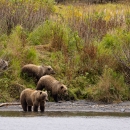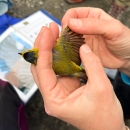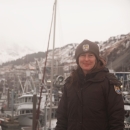Monitoring
Monitoring Avian Productivity and Survivorship (MAPS) Program
Status
Completed
States
AlaskaSummer 2024 was the last year of the Monitoring Avian Productivity and Survivorship (MAPS) Program at Kodiak National Wildlife Refuge (NWR). Over 15 nesting seasons (2010-2024) U.S. Fish & Wildlife Service (USFWS) employees, volunteers, and partners captured and banded nearly 3000 birds and recaptured around 200 birds caught during previous breeding seasons. MAPS is a continent-wide program of approximately 500 songbird mist netting and banding stations operated during the breeding season and administered through the Institute for Bird Populations. The Kodiak MAPS was a partnership between USFWS, Kodiak NWR, Kodiak College, and the Kodiak Audubon Society.
Learn more about landbirds.





